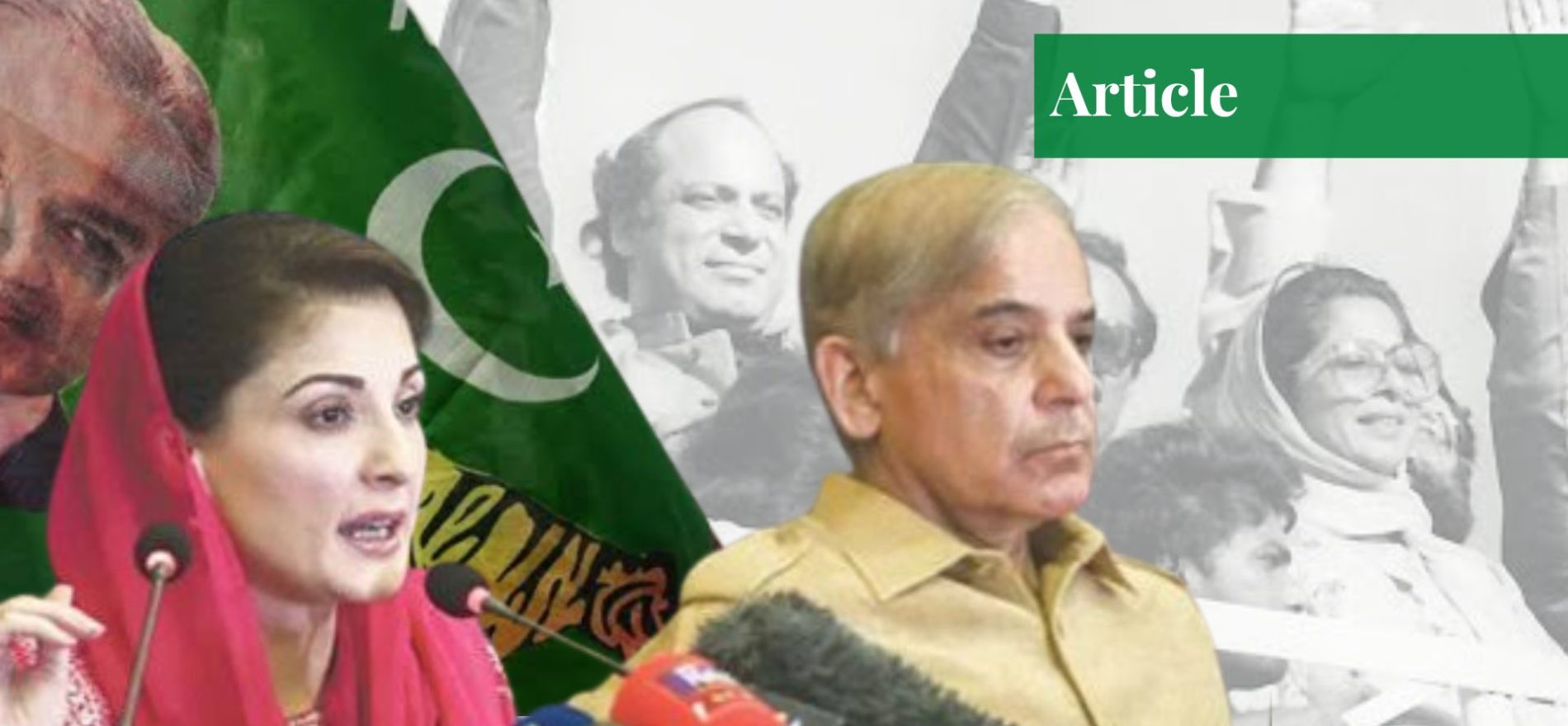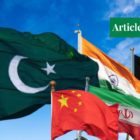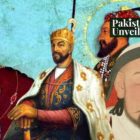Ms Afifa Iqbal has a keen interest in identity politics, colonialism and post-colonial development. She is currently working as a Research Assistant at ITU while pursuing her postgraduate studies in Development, Technology and Policy. She is a Gold Medalist in Political Science from the University of Punjab.
Introduction
To say that politics in Pakistan is a series of unfortunate events would be an understatement. It is a series of chaotic and tragic events during which individuals (and the institutions they represent) try to wrestle power away from other individuals and institutions. The political situation in Pakistan represents a literal game of thrones where everyone is almost always one step away from burning and pillaging the state resources to get what he/she wants.
Now, each of them might have a different way of rationalizing this struggle for power, but at its very core, it is what it is: interminable squabbling of the elite few to claim the largest share of the pie. Imran Khan’s struggle might have been fueled by self-righteous indignation that only he can save the country, while the Muttahida Qaumi Movement (MQM) turbocharged their politics by claiming to be the only saviors-in-town for the muhajireen (migrants).
PML-N (Pakistan Muslim League-N) and PPP (Pakistan People’s Party) rode the democratic wave and positioned themselves as the upholders of democratic values as opposed to the military dictators. But when all is said and done, they all tried to concentrate power in their own hands while suppressing others in the name of their cause, thereby adding more chaos to the already chaotic political situation of Pakistan.
What is even more troublesome is that none of them seem to have an idea on how to salvage the economy and turn Pakistan into the growth story that it was supposed to be. It’s a trial and error strategy where people calling the shots have no stakes in the outcomes; after all, their progeny is safely tucked away in the Global North.
The current political system in Pakistan lends credence to the aforementioned point of view. PDM (Pakistan Democratic Movement) booted out Imran Khan on account of misgovernance and a failing economy only to realize after coming into power that they have no coherent economic plan. The hum-and-haw while removing fuel subsidy epitomizes PDM’s economic dilemma.
More so, the sitting prime minister’s London escapades are a testament to his family’s cartel-like approach to managing state affairs. In the midst of the chaotic political situation, the public of Pakistan is left with only two choices—family cartels versus cult politics propped up by dynastic fiefdoms. And in both cases, the military remains an essential partner. Now, if these are the only choices left, the least those at the helm of power can do is not to treat their turn as an open season.
A Page Out of ’90s Playbook
Imran Khan’s selective use of accountability against his political opponents need not be reviewed again; it is still fresh in the public memory. However, what made this selective use possible warrants attention because the seeds of this selective approach were sown during the formative years of Pakistan and were nurtured in later years by a military-bureaucratic oligarchy, PPP and PML-N.
The ’90s is an interesting time in this regard. More often than not, military-bureaucratic oligarchy is regarded as the biggest obstacle to functional democracy in Pakistan, and for the most part, this is the truth. However, after Zia’s plane crash, the civil leadership had the unique opportunity to strengthen democracy and consolidate democratic institutions. It ended up squandering the opportunity in a manner that culminated in 1999’s coup.
In this regard, PPP’s corruption and play for power by the PML-N, during the ’90s, are important factors. In a paper published in the South Asia Economic Journal in 2004, Dr. Akmal Hussain notes:
“[T]he cost of such corruption to the banking sector alone was 10 to 15 percent of the GDP in 1996-97. It has been estimated that the overall cost to the country of corruption at the highest level of government, was 20% to 25% of the GDP in 1996-97, or approximately US $15 billion.”
PML-N, for its part, tried to subdue the military, judiciary, and the office of the president while attempting to control party members within the parliament. The then-prime minister, Nawaz Sharif, after introducing the 13th and 14th constitutional amendments, made an attempt to bring judicial appointments under his purview. This, of course, started a power tussle between the prime minister’s office and the apex court.
The episode that followed involved the initiation of a trial for contempt of court against Nawaz Sharif and the ransacking of the apex court by thousands of PML-N supporters on the day of the hearing. This prompted the president to voice his concern, stating that “he would not allow the law of the jungle to prevail.” Dr. Akmal Hussain describes what follows next in the following way:
“The Prime Minister retaliated by moving an impeachment notice against the President in Parliament and also sending him a summary advising him to sack the Chief Justice. The President was now faced with the choice of getting impeached or signing what he regarded as an illegal order against the Chief Justice. In a situation where the Army appeared unwilling to step in to resolve the crisis, the President decided to resign. Thus, the powers that were earlier distributed between the Chief Justice, the President and the Prime Minister, were now concentrated in the hands of the Prime Minister.”
The next logical target was the media and military. The fourth estate was managed, but poking the military awakened the dormant force and the apex court ended up validating the coup. The brazen struggle for power of one man delivered a deadly blow to democracy. Within all this chaos, the economy was severely neglected and the common man suffered.
This is not to discount the legislative prowess/legacy of PPP and the developmental work of PML-N, but to shed light on their systemic corruption and the naked struggle for power that made the shaky grounds of Pakistan’s polity even shakier. These tactics remain in PPP and PML-N’s playbook to this day. There is zero evolution in their approach to managing state affairs.
Circa 2022: Enter Prime Minister Shehbaz Sharif
Shehbaz Sharif had an opportunity to right some of the past wrongs and at least signal that he would do things somewhat or slightly differently – if not entirely. His reputation as a stellar manager precedes him. Also, he was in quite a good spot with the military and judiciary while Mariam Nawaz was herself managing the media.
In the current political situation of Pakistan, the public sentiment might have been charged but with the heat wave and ever-increasing inflation, it came with a natural threshold. All-in-all, Prime Minister Shehbaz Sharif was in a good spot when it came to formal and informal power-sharing arrangements. Imran Khan has done the work for Shehbaz Sharif in this regard.
But the prime minister has been squandering this opportunity up until now. The London escapade to meet with the big brother was unsuitable enough for the prime minister’s office. But the subsequent well-publicized trips with family members and that too on the state’s dime are Shehbaz Sharif’s unbecoming. Then, the political handling of Imran Khan’s long march and disregard for the apex court’s writ is reminiscent of the ’90s tactics.
The unconstitutional raids on the homes of PTI (Pakistan Tehreek-e-Insaf) workers and leaders, the unlawful arrests of the domestic staff of PTI leaders, and the use of tear gas on the marchers are nothing if not the brazen display of power and a nod to the ’90s. In all this, the economy has become the most neglected aspect and the sacrificial lamb for political expediency.
What’s Next?
Pakistan is that magical place where the more things change, the more they remain the same. PPP and PML-N are dead-set in their ways and PTI is an outlier that embodies the system’s paradoxes. So, if the choice is limited to family cartels versus cult politics with its dynastic fiefdoms, the least the public deserves is subtlety and a unanimous focus on the economy.
If you want to submit your articles, research papers, and book reviews, please check the Submissions page.
The views and opinions expressed in this article/paper are the author’s own and do not necessarily reflect the editorial position of Paradigm Shift.















